Estimated reading time: 4 minutes
If you're new to homesteading, you might be wondering which livestock to get first. That is the topic of this video from the Youtube channel, Homesteady.
He breaks down the livestock into three tiers: beginners, medium level, and expert. We'll start with the easy tier.
Want to save this post for later? Click Here to Pin It On Pinterest!
Easy Tier Livestock:
This category is for people who have zero experience and are not sure if animals will fit into their lifestyle. These animals are easy to:
- Source
- Manage
- Breed
- Feed
- Rehome
1. Chickens
Chickens are the best option for your first livestock.
Pros:
- Can start small
- Order online, quick arrival
- Can feed slop from meal leftovers, resulting in more chicks and eggs
- Easily sell chickens on craigslist in as little as a week, if needed
- Not too dirty or disease prone
- Tend to be hearty and thrive without difficulty
- Meat chickens can be harvested in 8-weeks
2. Ducks
Ducks share many similarities with chickens but have a few cons to consider.
Pros:
- Produce more eggs than chickens
- Grow more meat with less food
- Tend to do better in bad weather
Cons:
- Tend to be messy
- Butchering them can be tough
3. Rabbits
Rabbits are one of the best self-sufficient options to choose for a first livestock.
Pros:
- Easy to have a doe and buck breed
- They are inexpensive, making them easily replaceable
Cons:
- Possible to make mistakes in breeding
4. Fish
If you have a pond or body of water, fish yield a high reward with minimal effort.
Pros:
- Simple Care
- Unending source of protein
5. Worms
Worms can be added to any homestead.
Pros:
- Feed kitchen scraps
- Worm casings can add nutrition to gardens
- Great chicken feed/fishing bait
Cons:
- Not a fun option
Medium Tier Livestock:
Medium tier is for people who like owning livestock and are ready to try something more complicated.
1. Mini Jersey Cows
The best middle-tier option for livestock is the Mini Jersey Cow due to their docility and ease in managing, with high reward.
Pros:
- Stays in simple fence
- Eat grass
- Great milk production with flexible milking schedule
- If cows birth a bull, it’s a great meat source
- Not dangerous
- Easy to artificially inseminate
2. Pigs
Maybe surprising to see pigs early in the line-up, but all you need is good fencing and steady feed.
Pros:
- Grow with solid fencing
- Good meat
- Pigs survive until butchered
Cons:
- Can get worms
- Can get sick
3. Bees
Bees are not always conventionally thought of as livestock but should be considered.
Pros:
- Require minimal attention
- Seasonally self-feed
- Honey
Cons:
- Stings
- Technicality
- You can lose an entire hive
4. Turkeys, Quail, Guinea Fowl, Pigeons and other fowl
Not as easy or domesticated as chickens and ducks, but a great mid-level choice.
Pros:
- Each variety has pros
Cons:
- More difficult than chickens
- Less domesticated
Expert Tier Livestock:
For people who have experience with livestock and are ready to take on breeding, difficult veterinary procedures and escape artists.
1. Nigerian Dwarf Goats
Nigerian Dwarf goats have a leg up on other goat varieties. Dairy goats are the most challenging, they’re a wild animal that has been domesticated. Meat goats can be hardy.
Pros:
- Hardier than regular dairy goats
- Small, easy to fence
Cons:
- Will forage on poisonous plants
- Worms
2. Sheep
Although there can be benefits to having sheep, they are a difficult animal to manage on the homestead.
Cons:
- Hard to fence
- Shearing
- Worm issues due to intense grazing
3. Beef Bulls/Dairy Cows
Full-size cattle are an investment of resources, time and energy. It’s a challenging animal to raise, best for the expert homesteader.
Pros:
- Large meat/milk source
Cons:
- Dangerous
- Harder to contain
- Require commitment (3+ years)
- Dairy cows need to be milked 2x per day
Additional Livestock:
1. Horses, Camelids, Donkeys
There are many benefits to these larger animals but they require expert attention and care.
Cons:
- Large to accommodate
- Unique veterinary needs
Every person can benefit from livestock. It will make you a better person, teach you about yourself, sustainability, they’ll work your land and enrich your homestead.
For a much more detailed discussion of these animals, be sure to watch the video. Also, take note of the additional resources for each of these animals found at the end of the video.





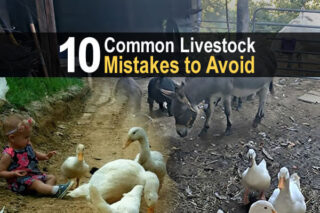

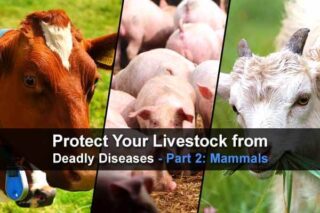
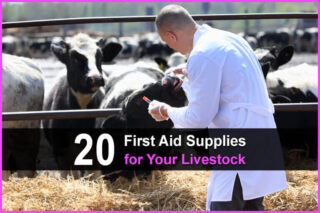
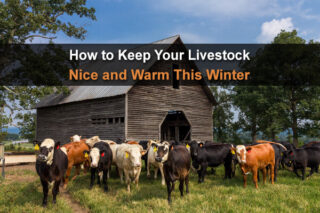
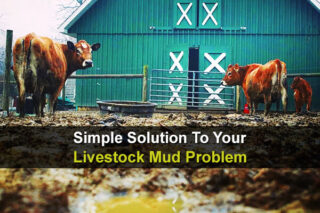

Thanks for the info….
My art teacher can be classified as an almost homesteader. We both llive in the same country town, but she lives on the outskirts. She is almost self sufficient.
As for me well I can try to get chickens, but I live with my parents and they won’t allow it (Sigh).
What the heck? Rabbits are actually more difficult to raise than goats simply because they are not hardy. Have you ever tried raising any of the these animals? Clearly not. . .I have and I would say that rabbits and cows are more difficult than Nigerian dwarfs! 🙄
My husband and I homestead for 6.5 years now. We have done a lot and even have owned 70+ acres for a couple years. We have done layer duck, meat ducks, chickens, meat chickens, raised chicks right up in brooders etc, guineas, multiple sets of feeder pigs and different breeds, we have a boar, and two farrowing gilts who just had this year combined 22 piglets in two litters, beef cattle, dairy cattle, butchered our own chickens, hogs and cows, and we just recently got two mini Nubian first fresheners dairy goats with 3 week old twins each. Our dairy cow was culled and the bred heifer isn’t due yet and I wanted to try milking something else. Worst mistake!
The goats are like the last circle of Hell in Dante’s inferno. They are the worst livestock we have ever owned. I regret purchasing them. They are the most fragile, living hour to hour, diet sbd parasite balancing act, trying to keel over from worms because you did 1 out of 300 points of maintenance wrong once or missed one step, did I say worms (we have even had to buy our own serious duty microscope and slides to do our own fecal tests because goat owners do NOTHING BUT CONSTANT FAMACHA CHECKING OF EYELIDS FOR anemia and fecal tests all the time….if you ask a question on a board, everyone says get fecal get fecal, and apparently for some you can practically just find them dead within days it gets so serious so fast. You think we bought sick goats? Nope, they were so healthy the goat owners never had problems with any goats not even worms for 4 years. The stress of being moved in the back of a mini van in total luxury no wind, no nothing was enough to cause I guess a parasite bloom and the change in diet is like sending them off the deep end. You have to withhold them from pasture best 6 weeks+ before regrazing because they are so susceptible to worms. Their poop clumps into dog logs not marbles for a thousand reasons and top one of them is worms, did I say fecals? Their diet shifts slightly and they become stressed and worms bloom. Their diet shifts slightly and their rumen falls apart and they get clumpy poop or mushy poop, and must avoid all our diarrhea. But how? Is it the alfalfa? Was it the clover? Was what they ate in the brush different than yesterday’s brush? 2nd cutting and back down to 1st cutting? Or should I feed alfalfa pellets and 1st or try third cutting….? Must not graze them on wet grass bc poop can change and disturb them. Also parasites can climb wet grass easier. Also grass can’t be shorter than 4″. You have to have insanely tight fences. We do electric portable fence and if the fence is off by accident they know it and out they go. They eat brush at an alarming speed and while we have tons of it don’t think you’ll get goats to browse your total owned 5 acres bc you’ll be thru snacks for them in about 2 weeks days. Very hard to put portable fencing up in brush because it gets tangled and you have to make paths for fence to be laid down to properly electrify. They can’t and won’t eat hay that falls on the ground so a lot of waste. But we feed that back to our hogs. Once they decide they are done for the day with a patch of browsing they scream and I mean scream non stop every few seconds until you let them out. I’m not going to even get into the terror they are on the milking stanchion. It took two adults to hobble one goat and then she bucks like a rodeo stallion barely slowed by the hobble, buckles her knees so it is hard to reach udder and carries on so we have yet to get milk from her. The other one kneels on stanchion with udder in the air and lays head on stanchion. This is even with a five gallon bucket sideways under her belly. And hobbled and kicking. Milking grain? Absolutely not! You just disturbed their rumen! But now they are eating phosphorus mineral like crazy bc they need grain! Have you wormed yet/taken fecals or is the diarrhea from the grain or the type of forage or the stress of crossing the yard or the gorging in rich alfalfa hay (by they won’t eat other hay), or WORMS or COCCIDIA. Oh right it rained 3 times this week and it is a good idea to give a coccidia preventative herbal support to keep that at bay. Oh and good luck with their mineral balance. They need minerals but no commercial minerals give proper balance so you have to do stuff like 4x a year give copper bolus and replamin tubes and vaxxes and nutridrenches and mineral buffets so they can self medicate. As well as salt, kelp, and baking soda. It is downright ridiculous.
Yes, cows have to be milked but otherwise they are like super chill, laid back, oh was there a blizzard I didnt even notice or blink, hardy, only need hay, pasture, basic minerals, salt. Don’t graze them on very wet rich pastures like pure alfalfa or clover. Get a loose stool from driving in trailer, few days gone. Diet change – eat in woods one day, no problemo. Eat hay the next? Pasture after that? Grass clippings. No worries, rumen is all good. Done. The one thing though is they are very large and need large infrastructure and they absolutely cannot be physically moved if you want them to come and they don’t want to. More dangerous due to size.
I like the size of goats as the pro and everything else is a con! And I am NOT a green homesteader!!! They are the hardest livestock out there to raise.